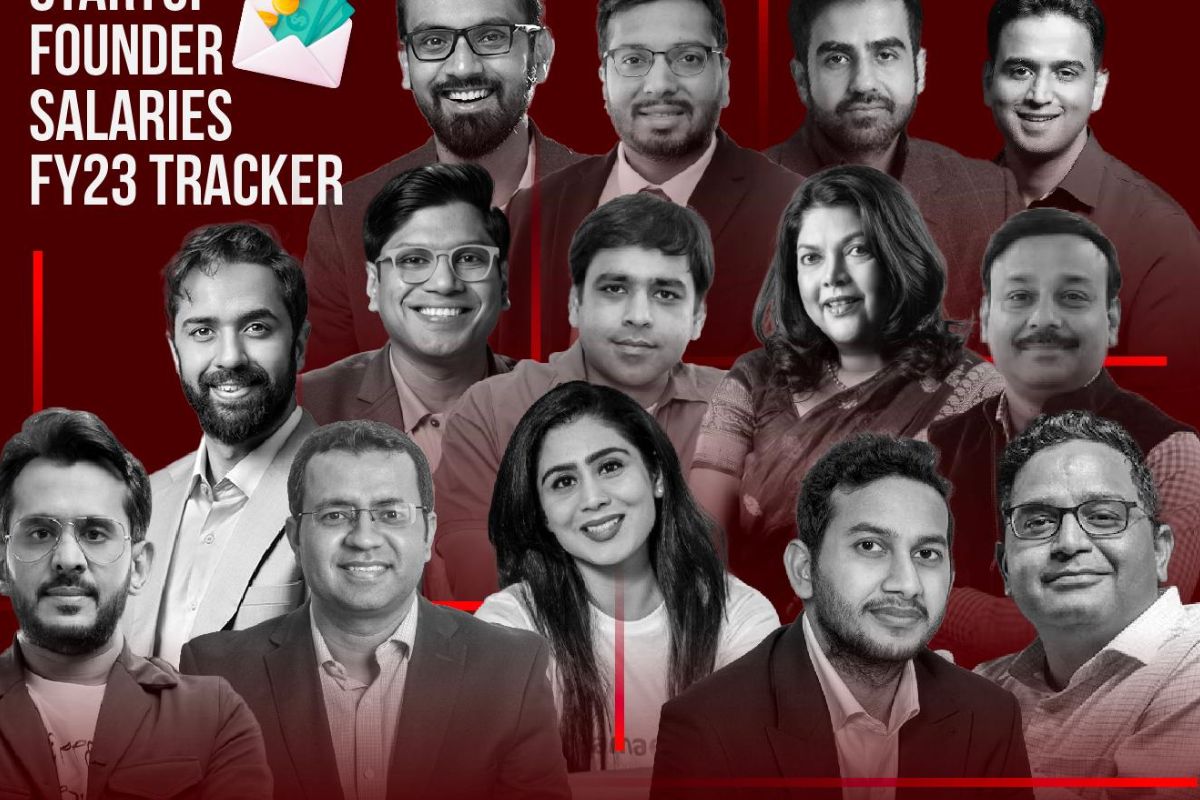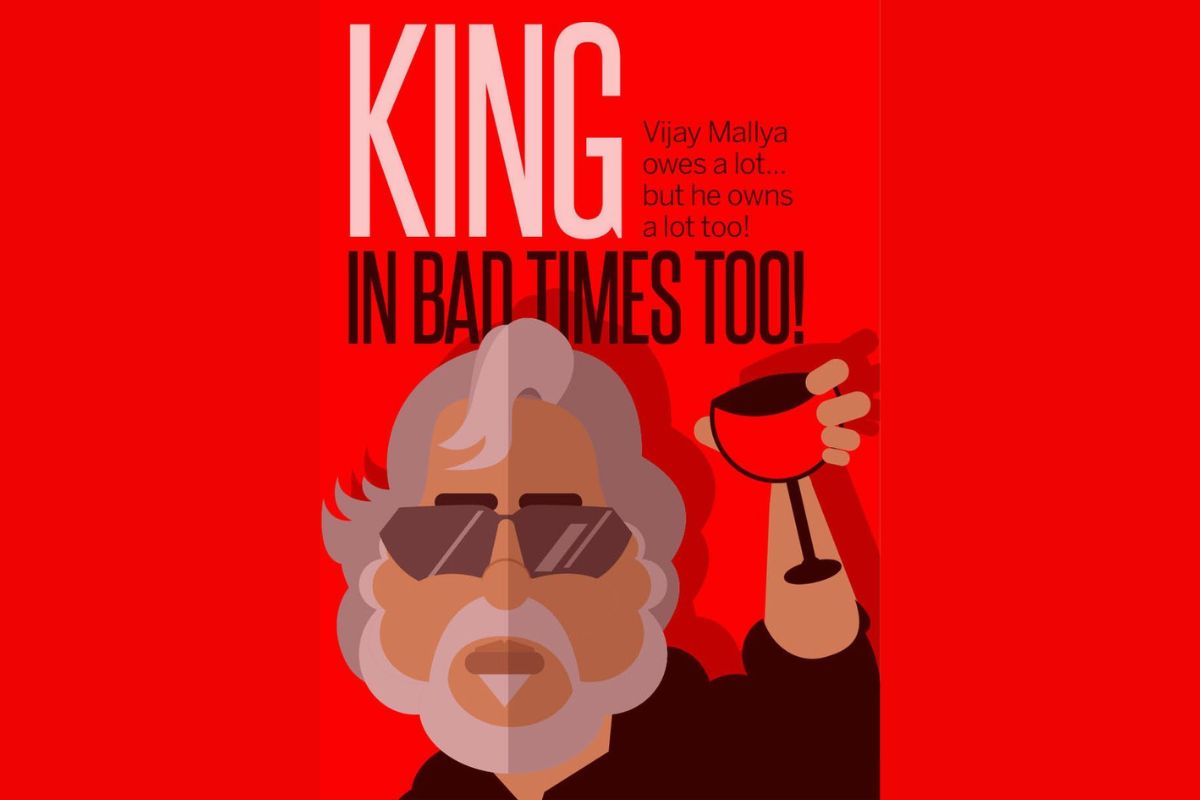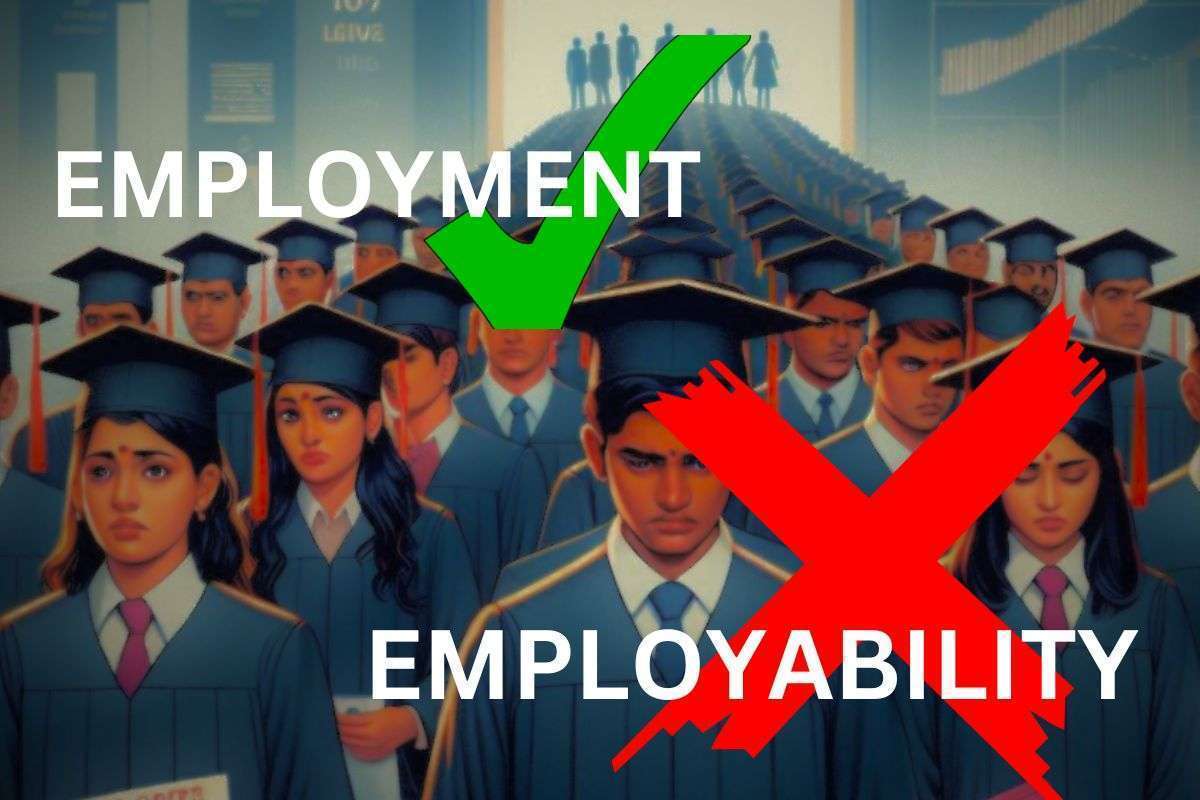Unacademy CEO Wore 33000 Outfit While Announcing No Appraisals; Reliance Laid Off 42000 Staff After Lavish 5000 Crore Wedding: How Indian Businesses And Their Display Of Conspicuous Consumption Is Not Favourable For The Overall Economy?

The startup environment, particularly in India, reveals the stark reality of a massive wealth disparity between founders and their attitude towards the employees, displaying the ugly side of entrepreneurial success and destroying hopes.
- Recently, Unacademy CEO Gaurav Munjal wore a 33,000 Burberry T-shirt while announcing there would be no appraisals for employees this year.
- A few days earlier, Ambani group spent INR 5000 crore on his son’s wedding and then laid off 42000 employees.
Both have attracted similar kinds of criticism from social media.

These incidents have brought to light the issue of “conspicuous consumption” among the wealthy. How can we make sense of such displays of private riches by the top in a capitalist society rife with inequality? It demonstrates how conspicuous consumption during difficult times may harm a company’s image, pushing leaders to be more cautious in their spending decisions. Does billionaire consumption in an unequal society stifle or promote economic growth? What are some of the ethical and economic implications? The arguments raised here are not limited to the Ambanis, or Unacademy CEO but rather aim to address some general considerations about private spending by the wealthy.
What is conspicuous consumption?
Thorstein Veblen, an economist, noted in 1899 that silver spoons and corsets were indicators of upper social status. In his now-famous treatise ‘The Theory of the Leisure Class‘, Veblen invented the term “conspicuous consumption” to describe how material things were displayed as indications of social position and status. More than 100 years later, conspicuous spending remains part of the contemporary capitalist landscape.
Is conspicuous consumption wrong?
The wealthy’s conspicuous consumption is not inherently problematic. HNIs and company owners are free to spend their hard-earned money on whatever they like. Not everyone can be as frugal and luxurious as Warren Buffett, Mr. and Mrs. Narayana Murthy, or Ratan Tata. However, the question is one of time, context, and resemblance. It’s about showy expenditure, which is normally valued and encouraged for economic growth when employees or firms are experiencing financial difficulties. There is a prevalent belief that the wealthy can afford to spend so much money while people who rely on them lose their jobs or do not receive raises.

Perspectives from both ends.
The defence by billionaires.
A justification for billionaires’ consumption might be as follows: Under a liberal capitalist democracy, there are no constraints on what one may do with one’s private property. Assuming that market mechanisms are fair, billionaires’ consumption expenditures, no matter how extravagant, are a lawful exercise of their private liberties that cannot be questioned. They are not concerned with the presence of inequality but rather with the appearance of faulty policy that inhibits market freedom and limits pure competition. Increasing market access, in this opinion, would ensure that everyone had enough money.
Another argument for billionaire spending is that, regardless of the ethical difficulties, as long as consumption occurs domestically, the growth of purchasing power leads to an increase in demand for locally produced goods, as well as an increase in domestic employment and earnings. In nations like India, where creating adequate jobs is a major challenge, the rich’ private spending provides a critical boost to aggregate demand. However, this is the second-best solution to the demand problem, as investment, not consumption, is essential for raising living standards.
For example, in 2022, it was noted that ‘Conspicuous consumption by the rich has spiked GST collections’, so one may think that an increase in GST collections is a positive sign. The increase in revenue from the GST does not reflect a broad-based economic recovery from the second COVID wave shock; rather, it reflects a rebound in conspicuous consumption, warns Suranjali Tandon, assistant professor at the National Institute of Public Finance and Policy.
She argues that Higher revenue collections are a combined result of rising prices, higher imports and, possibly, the pattern of consumption. While the GST follows the overall expansion of the economy, it obscures the distributive repercussions. To back up this claim, analyse the spike in sales of premium brand cars during the peak of the COVID-19 second wave. This reflects the nature of the recovery, in which sectors and items consumed at greater prices by the wealthy have increased GST revenue collections.
Justification by the right.
On the opposite end of the political spectrum, Marxists (those who are critical of capitalism and believe in the self-emancipation of the working class) believe that because value is generated only by work, profits are an unjust extraction of value.
Thus, all types of billionaire spending are illegitimate because private wealth is acquired by denying workers’ lawful demands. The presence of a big working class with low earnings and a tiny number of billionaires is not the result of a broken market process but rather an obvious aspect of capitalism. The rights to private property inherent in free nations conceal major structural inequities that continue to benefit a few at the cost of the many; in this context, billionaire spending cannot be justified.

The micro problem- Fancy life of founder and frugal condition of employees.
While some founders have significantly decreased or discontinued their salaries, this gesture is not always sincere. Sources mention that “They’ve already guaranteed their riches through Series A secondary sales; they don’t need a monthly pay!” This discrepancy between the founders’ lavish lifestyles and the budget cuts that their firms must implement raises serious concerns about leadership and responsibility in the business sector.
During the startup boom, headlines were filled with news about businesses providing amenities such as Mercedes automobiles, high-end work-from-home arrangements, substantial ESOPs, and flexible leave policies. However, as financing levels fall and reality checks on business models and product-market fits become more prevalent, belt-tightening is predicted. Remember the January 2023 event in which the famed controversial startup founder, Mr Ashneer Grover, came up with a novel proposal to replace gratuity (after five years of service at a company). In his new firm, Third Unicorn, he has opted to present his staff with a Mercedes rather than pay them a gratuity. Now, everything is justified if the company goes up, or otherwise, this dream may shatter the futures of many!
Moreover, The funding winter has resulted in layoffs and pay cuts for startup employees, give rise to the question that whether startup founders have also seen a decline in their salaries? In the fiscal year 2022-23 (FY23), 98 founders of 57 new-age technology businesses in India earned INR 496 crore in yearly salary! The average founder yearly compensation increased by 68% to INR 5.16 crore in FY23 from INR 3.07 crore in FY22.

Moreover, FirstCry’s Supam Maheshwari was the highest-earning founder in FY23, taking home INR 200.7 Cr as annual remuneration. Do not forget this person was probed for alleged $50 million tax evasion just a year ago. And now, after reporting Rs 5,632 Cr revenue in FY23 with losses spike of 6X, the IPO of Firstcry is there in the market with the book-built issue consisting of a combination of fresh issue of 3.58 crore equity shares worth ₹1,666.00 crore and an offer for sale (OFS) component of 5.44 crore shares aggregating to ₹2,527.73 crore. Now, these loss-making companies offering the sale of secondary shares more than the new ones is itself a red flag.
History shows the list has many who celebrated extravagance, and the consequences are borne by the employees.
Earlier, conspicuous consumption was also an indication of deeper difficulties with the customers’ business operations. For example, in 2022, one month after announcing the layoffs of over 2,500 employees, Byju appointed Lionel Messi as their worldwide marketing ambassador. In less than two years, the firm and its founder have fought court battles to avoid bankruptcy. Also, when Byju revealed its sponsorship of the FIFA World Cup in 2022, the firm followed up by laying off around 4,000 people. What’s the reason? Path to profitability.
Don’t forget the photographs of Vijay ‘King of Good Times’ Mallya in London and the fate of Kingfisher Airlines employees, which is still shocking.

The macro problem- The impact on society.
Veblen believed that in a class-segregated society, the leisure class – those who do not need to work – utilises conspicuous consumption to display their social status and distinguish themselves from the working class. Financial copying drives this tendency, in which individuals aspire to the lifestyles of those higher up in the social hierarchy, frequently resulting in excessive expenditure and a concentration on status rather than content. Since the mid-twentieth century, India has seen a significant increase in consumption as its economy has grown and living conditions have improved. The drive for rapid fulfilment and euphoric expectations has resulted in a consuming spree with little practical value.
Have you ever seen those billboards with commercials promoting discounts and sales on branded items or interest-free loans till you own that lovely home you could never afford? Institutional lenders, consumer retail corporations, automakers, and housebuilders exploit vulnerable consumers by providing easy access to credit at low rates and financial incentives, coercing them into making poor financial decisions.
For example, there was a time when people used to accept the EMI payment process for the purchase of assets such as live TVs, Fridges, cars, etc. Now that the situation has changed, there is an EMI option for commodities of the ‘liability’ category. If you do not believe then go to any e-commerce website, and you will see EMI payment options for phones, gadgets, and even earrings!! Maybe that’s why Mr Asheer Grover once asked a pitcher to ‘sell a golgappa on EMI’. This shows how the gratification of sudden euphoria is pushing people to ‘levels of Conspicuous consumption’ before they can make any mindful decision.
If you still think about how this opulence by the rich is going to influence the average Indian, then consider these statistics that say Indians’ wedding budget is over three times the average household income, and Expenses are twice as much on weddings as on education. In a global scenario involving mass layoffs and in a country like India, which has a huge demographic dividend, not-so-good employment opportunities, and compromising employability standards, the aspect of spending more on weddings than education is not a good sign for society!

So, what is the solution? Should the rich not spend and live the life of a hermit?
This is more than simply being ethically tone-deaf; it is also a poor corporate branding approach. Furthermore, at a time when businesses are cutting costs and rationalising, promoters, founders, and senior management displaying their riches is inappropriate. It is about the affluent business class being mindful of the time and context of such expenditure in relation to their business circumstances. Failure to do so on an optical or strategic level, regardless of ethics, can be detrimental in a society where perception counts.
India’s expanding startup ecosystem, the world’s third-largest, has seen countless flops. For every success story, many enterprises started by ambitious entrepreneurs showed promise and even received investment from angel investors or venture capitalists but eventually faded out and disappeared. However, the collapse of some company entrepreneurs from dream-makers to heartbreakers is due to the opulent lifestyles they lead despite staff layoffs and cost-cutting initiatives. The VCs have also contributed to this by helping entrepreneurs gain large sums of money through secondary share sales.
The absence of knowledge, financial discipline, and sensible strategy in decision-making, along with bad execution, results in frivolous spending, which not only destroys investment values but also forces organisations, particularly new ones, into a slew of additional problems. Also, wasteful consumption by the general public is not the only case. It will indirectly tamper against the growth of companies as well.
If the mass public is spending more on extravagance than on education, then sooner or later, a situation may arise when the companies will see a lack of competent people to carry out their operations, and hence, it will affect the corporates as well. For example, there were no takers for 18 lakh jobs in the financial services sector in India, as reported by the Financial Planning Standard Board, India CEO last month. So, mindless conspicuous consumption may hinder both the micro and macro development of the country, damaging both the individuals and the corporates.
The last take.
In Hindu philosophy, there is the notion of ‘Desh, Kaal, Patra’ – ‘Place, time, object’. It encourages people to act in accordance with their spatial and temporal locations, as well as their traits. We live in a period of social media proliferation, which has resulted in increased public scrutiny, where the rich and famous are bound to be judged for their conduct.
This does not imply that the rich must justify their spending or live beyond their means. Alain de Botton’s book Status Anxiety uncovers numerous inventive strategies for people to overcome their status fears, including reassessing ideals, enjoying art, focusing on inner qualities, exploring alternative lifestyles, and fostering humour. However, the answer might be much simpler: inconspicuous consumption. Consuming privately amid difficult economic times (for others) may not be such a bad thing. Perhaps it’s time to bring it back in style.
In their quest for valuation and victory, the rich should not forget the individuals who built their aspirations, which are the efforts of employees who put up their sweat and blood to build their entire business empire.
Do not forget that the Taj Mahal may have the name Shahjahan, but the applause is for the workers who beautifully crafted the marvellous structure.
However, it is up to you and me, as the general public, to resist falling into the trap of conspicuous consumption since, as Warren Buffet once remarked, “If you buy things you don’t need, soon you will have to sell things you need“.
The goal of this post is not to point fingers at specific examples of conspicuous consumption but rather to put certain economic difficulties in context. In contrast to a Marxist interpretation, excessive consumption by the affluent is a problem only if there is insufficient investment to absorb people looking for employment and if working-class consumption is hampered by high monopoly prices. In the backdrop of high young unemployment, stagnating real earnings, and large job losses, the glaring inequities on display constitute a very serious public policy issue that needs to be solved.




